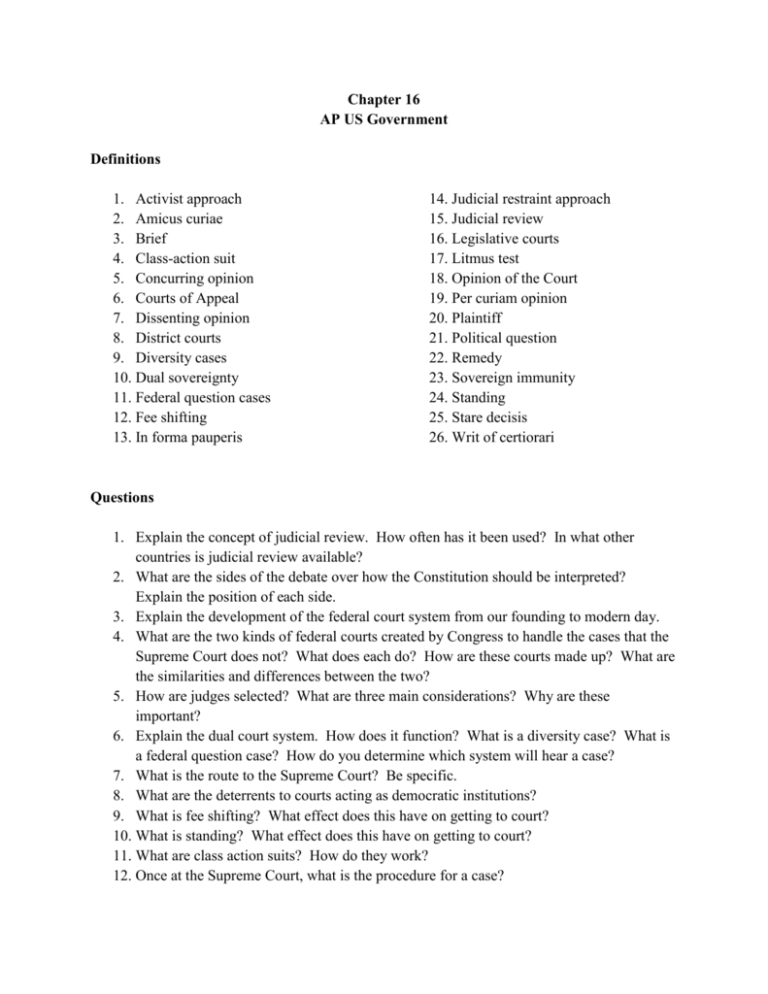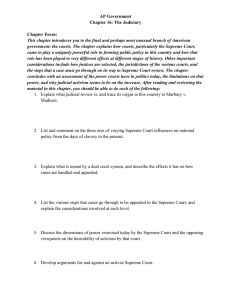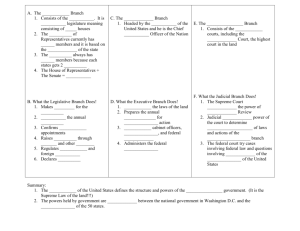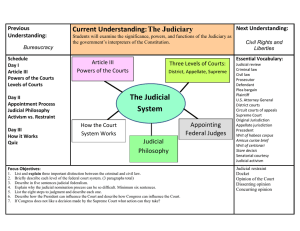Chapter 16 AP US Government Definitions Activist approach Amicus
advertisement

Chapter 16 AP US Government Definitions 1. Activist approach 2. Amicus curiae 3. Brief 4. Class-action suit 5. Concurring opinion 6. Courts of Appeal 7. Dissenting opinion 8. District courts 9. Diversity cases 10. Dual sovereignty 11. Federal question cases 12. Fee shifting 13. In forma pauperis 14. Judicial restraint approach 15. Judicial review 16. Legislative courts 17. Litmus test 18. Opinion of the Court 19. Per curiam opinion 20. Plaintiff 21. Political question 22. Remedy 23. Sovereign immunity 24. Standing 25. Stare decisis 26. Writ of certiorari Questions 1. Explain the concept of judicial review. How often has it been used? In what other countries is judicial review available? 2. What are the sides of the debate over how the Constitution should be interpreted? Explain the position of each side. 3. Explain the development of the federal court system from our founding to modern day. 4. What are the two kinds of federal courts created by Congress to handle the cases that the Supreme Court does not? What does each do? How are these courts made up? What are the similarities and differences between the two? 5. How are judges selected? What are three main considerations? Why are these important? 6. Explain the dual court system. How does it function? What is a diversity case? What is a federal question case? How do you determine which system will hear a case? 7. What is the route to the Supreme Court? Be specific. 8. What are the deterrents to courts acting as democratic institutions? 9. What is fee shifting? What effect does this have on getting to court? 10. What is standing? What effect does this have on getting to court? 11. What are class action suits? How do they work? 12. Once at the Supreme Court, what is the procedure for a case? 13. What is an amicus curiae brief? What bearing does it have on a case at the Supreme Court? 14. What are the conference procedures? 15. How does the court system make policy? 16. What are the measures of power of the federal court system? 17. What are the differing views of judicial activism? 18. Why does activism exist? 19. What are the checks on judicial power? 20. Discuss the following court cases. Explain the year, the players, the situation, the outcome, and why it is significant to study today. Marbury v Madison, McCulloch v Maryland, and Dred Scott v Sanford. 21. Who are the current Supreme Court justices? Who is the chief justice?











